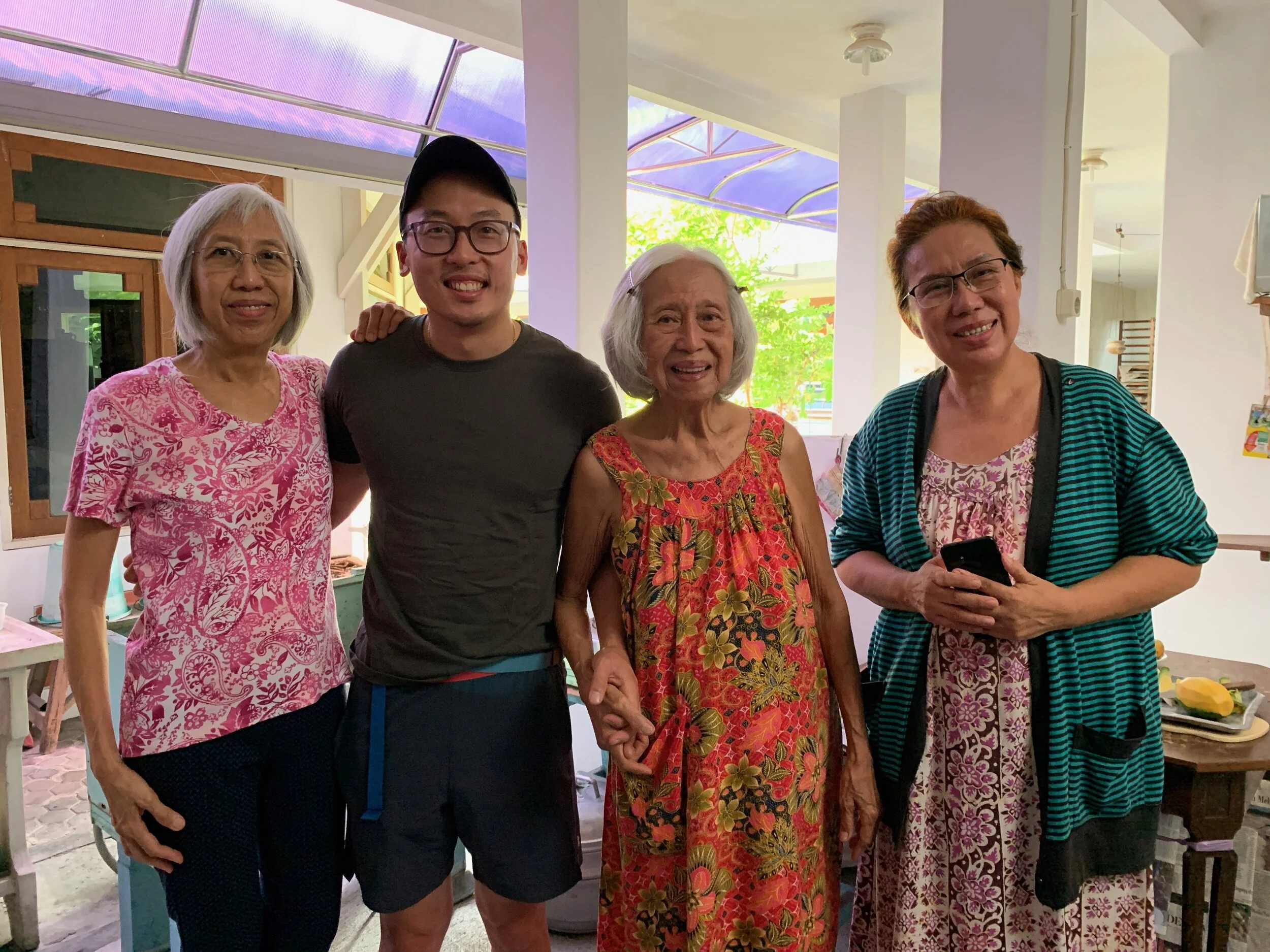How I Started Bay Modular, Part 2
Bay Modular was always going to be a mission-driven business. It began in earnest and transformed into the mission-driven products that define our business today. As I described in my original post (How I Started Bay Modular), I began exploring home renovations and additions as a way to help families create bright, new spaces in existing homes and open the door to new possibilities for multi-generational living. This concept of multi-generational households would become the lens that I used to visualize housing solutions with modern construction innovations.
Multi-Generational Living as the Solution to Housing Shortage
My nyak, wama, and dede in Surabaya, Indonesia in 2019
As an Asian American kid growing up in the central valley of California, it was a blessing to have extended family living with us for most of my childhood years (as I’m sure it was for my parents). Growing up with my grandma and two aunts who lived with us for extended periods each year created an opportunity for me to learn about their lives in Surabaya, Indonesia, eat treasured Indonesian dishes, and learn several dialects of Chinese and Bahasa Indonesian at the same time.
Although this concept has been foreign to most American households over the last 50 years, it wasn’t always that way. I learned in a report from the Pew Research Center that as recently as the 1950s, multi-generational households represented nearly 21% of the US population. The number bottomed out at 12% in 1980 and then a growth in racial and ethnic diversity (specifically Asian and Hispanic) spurred the growth of multi-generational households once again, catching a massive boom during the Great Recession and the year following. By 2016, the percentage of multi-generational households had matched that of the 1950s, but represented a huge population of more than 64 million vs. the 31 million in 1950.
The 2018 findings were echoed in several other city planning articles and demography studies, even finding itself in a long-form essay in Fast Company.
American cities and suburbs will need to undergo a radical change in response to climate change, shifting away from single-family homes and toward denser housing typologies, away from personal vehicles and toward public transit, walkability, and shared cars, away from independence and towards resource sharing. Ironically, we stand to benefit from those changes as we age.
“The future of housing looks nothing like today’s” by Kelsey Campbell-Dollaghan
I’m bullish on multi-generational housing as the catalyst to counteract the growing homelessness in America’s urban centers. By creating a housing solution that promotes multi-generational living and cohabitation, we stand to assist families with short-term financial troubles by bringing parents and children home, while also providing the roadmap for a long-term increase in housing stock. An increased supply of housing such as attached and detached additions, will bring the cost of rentals down and opens opportunities for workers in critical, low-paying jobs such as education, healthcare, and trades, to live closer to the places they work.
New Build vs. Renovation
It feels like a lot to put into a single post, so I might write another one.
I looked into renovations. In fact, there are several companies that I’ve been watching over the last few years in the home renovation space, including Instagram ad-worthy companies like Block Renovation and Made Renovation.
As I curiously went through the process of designing my “dream bathroom” and dream kitchen, I quickly realized this service was not made for everyone. It was clearly a high-touch, white-glove service designed for families purely interested in beautifying existing space. There is a place and a market for this, but it wasn’t mine.
Jobs-to-Be-Done Exercise
Our products had to be driven by an intent to create new space for larger families and multi-generational living for the reasons I mentioned above, and while these solutions certainly evoked a Construction 2.0 feel, they were still operated through traditional general contractors behind the scenes with a polished project management front end. This was not the solution for Bay Modular.
As I looked into the alternatives to the white-glove renovation services, I dug deeper into the business of HomeAdvisor and Thumbtack, even hiring several for odd jobs to get a better grasp of the service. And again, while it’s certainly a more comprehensive experience than the digital phonebook approach of Yelp, Nextdoor, or even Craigslist, the continuity ends when you sign the contract with the contractor. They’re matchmaking services, not a construction company.
Jobs to Be Done Framework
After talking to a dozen renters, homeowners, parents, young adults, and seniors, I surveyed the market of construction products ranging from renovated additions to fully manufactured mobile homes (I almost went this route), looking at the solutions for their benefits, shortcomings, and other possibilities.
We confirmed the assumptions that, while custom renovations addressed the issue of increasing usable square footage, they were often too expensive and wildly unpredictable. And while others promised reliability through manufacturing, they lacked the aesthetic appeal and customization of the renovation.
I turned our research into digestible pieces, breaking it down into the JTBD framework to answer the question “What job are they trying to get done?”, resulting in several key questions:
1: Define the market around the “job to be done”
Adults looking to create more space to bring parents home to help with kids. Parents looking to provide a temporary landing pad for college-aged kids. Renters looking for ownership opportunities with high long-term utility. Homeowners looking for opportunities to increase property value.
2: Uncover the customers needs
We uncovered a gem in this process. While many of the Construction 2.0 companies we surveyed were looking for ways to market to homeowners that wanted to increase property value, the majority of homeowners we interviewed were more interested in adding more space to “house their people.” This idea helped solidify our path towards designing and building accessory dwelling units as our core product.
3: Quantify the degree to which each need is over or under served
There are existing services to help homeowners create more space, but all have shortcomings. Typical construction projects are seen as nightmares — living in construction zones, running over budget, running over timeline, providing too many options, overly involved customers, under involved customers, etc.
4: Discover hidden segments of opportunity
Although budget was a focal point for every homeowner, most would pay a premium to make fewer decisions and avoid involvement in the entire construction process.
5: Conceptualize new products to address unmet customer needs
This was how our vision for prefabricated modular ADUs was born.





